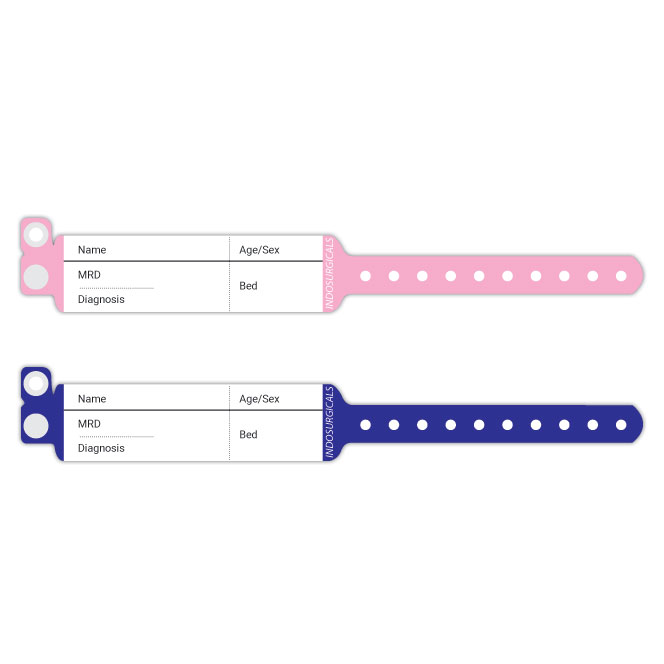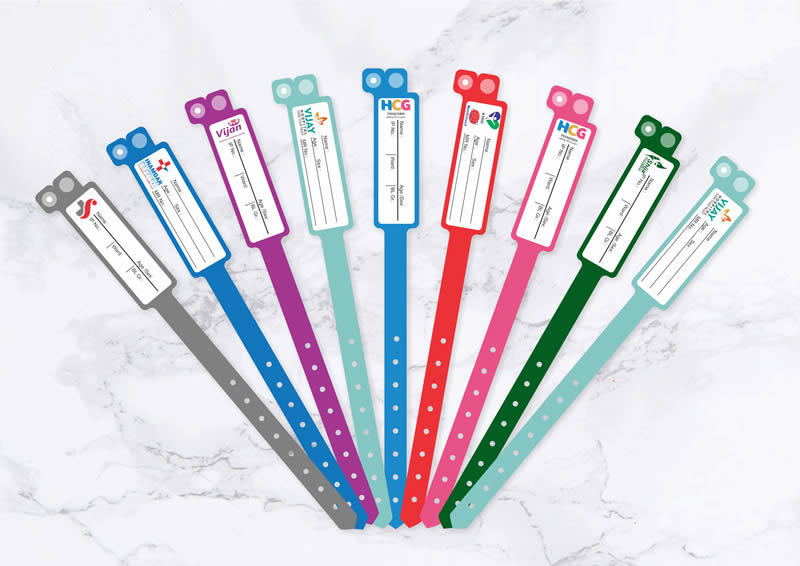Patient Identification Band: Enhancing Accuracy and Efficiency in Hospitals
Patient Identification Band: Enhancing Accuracy and Efficiency in Hospitals
Blog Article
Exploring the Various Kinds Of Patient Identification Band Utilized in Medical Facilities
In the detailed world of healthcare, the vital role of Patient Identification bands commonly goes unnoticed. These bands, differing from easy paper wristbands to advanced RFID bands, develop the backbone of Patient security protocols, making certain precision in Patient Identification.
Comprehending the Importance of Patient Identification Bands
While they might seem like mere accessories, Patient Identification bands play an important role in medical centers. These bands offer as a vital tool for confirming Patient identification, preventing clinical mistakes associated to misidentification. Patient Identification bands also help in simplifying management jobs, making sure accurate record-keeping and billing.
Traditional Paper Wristbands: Their Use and Limitations
Typical paper wristbands have actually been a staple in Patient Identification throughout different medical facilities. While their usage is prevalent, they harbor specific restrictions that may affect their efficiency in Patient administration. This area will certainly focus on the extent of their application and the integral drawbacks related to their use.
Paper Wristbands: Use Range
In the realm of Patient Identification, paper wristbands have actually long held an essential function. These bands are commonly used in outpatient settings, where the Patient's keep is short-lived. Despite developments in innovation, the modest paper wristband continues to be a economical and trusted solution for Patient Identification in various healthcare scenarios.
Limitations of Paper Wristbands
In spite of their extensive use, paper wristbands are not without their downsides. Their physical resilience is among the considerable restrictions. Direct exposure to water, sweat, or harsh handling can provide them unreadable or perhaps create them to degenerate. Additionally, paper wristbands often lack the technical capacities of even more modern-day choices, such as barcoding or RFID chips, restricting their performance to simply showing composed information. The inability to update or change the information on the wristband is another imperfection. Moreover, if the information is handwritten, clarity can be endangered, causing prospective misidentification. Finally, paper wristbands can create pain or skin irritation to some patients, specifically when used for extended durations.
Barcoded Wristbands: Innovations in Patient Identification
While Patient Identification has actually long been a critical element of health care, the development of barcoded wristbands indicates a significant leap ahead. These bands take advantage of the simpleness of barcoding innovation, enabling for Patient info to be swiftly checked and accessed. They boost the rate and precision of Patient Identification, lowering the threat of clinical mistakes connected to misidentification.
Superhigh Frequency Identification (RFID) Bands: an Action Towards Futuristic Healthcare
The evolution of Patient Identification bands has produced the introduction of Superhigh frequency Identification (RFID) Bands (patient identification band). These cutting-edge devices present essential advantages for healthcare centers, supplying an extra effective and technically advanced means of Patient Identification. The application of RFID in health care is a significant step in the direction of a much more futuristic approach to Patient administration and security
Comprehending RFID Bands

RFID Bands: Secret Advantages
Welcoming a future where modern technology and medical care combine, radio regularity Identification bands provide a number of essential advantages. Primarily, these bands improve Patient safety and security by supplying precise, instant Identification, therefore lowering clinical errors. RFID bands can store a vast quantity of Patient data, including clinical background and allergies, enabling individualized treatment. They likewise streamline management jobs, as the automated advice data entry changes hands-on processes, boosting effectiveness and reducing documentation. RFID bands use real-time tracking of people, important in high-risk settings such as surgical treatment or extensive care. These bands are long lasting and immune to environmental variables, guaranteeing regular functionality. more helpful hints Generally, RFID bands represent a considerable advancement in Patient Identification innovation, profiting both clients and medical care companies.
Applying RFID in Healthcare
As we enter a technically sophisticated period, the execution of RFID bands in healthcare becomes increasingly important. These bands supply a smooth means to track and recognize people, guaranteeing their safety and security and boosting performance in therapy procedures. RFID bands supply numerous advantages over traditional Identification approaches. They can save a substantial quantity of information, including the Patient's case history and therapy strategies, which can be conveniently accessed by doctor. This information aids physicians make notified decisions regarding the Patient's therapy strategy. RFID bands lower clinical errors by providing exact Patient Identification, which is critical in stopping misdiagnosis or wrong medication management. Therefore, the implementation of RFID bands is a substantial action towards boosting Patient safety and medical care shipment.

Color-Coded Wristbands: Aiding in Quick and Accurate Medical Diagnosis
In the busy atmosphere of a medical center, color-coded wristbands have emerged as important tools for swift and precise Identification of a person's clinical condition. These wristbands, used by patients, carry certain colors that match to various medical conditions or standings. Red might indicate allergic reaction threats, while yellow may signify a loss danger. This system is developed to offer prompt visual cues to medical care view website suppliers, improving Patient security and care quality. In emergency situation circumstances, making use of these wristbands permits fast decision-making. However, the efficiency of color-coded wristbands depends on the harmony of color analysis across medical care organizations, calling for typical standards for constant application.
Approaches for Reliable Implementation and Administration of Patient ID Bands
Attaining optimal use of Patient Identification bands requires a well-structured approach for their implementation and management. The very first step includes training all wellness employees on the importance of correctly applying and reading these bands. Secondly, healthcare facilities need to systematize making use of ID bands throughout all divisions, making certain harmony and reducing discrepancies. Normal audits needs to be performed to validate adherence to plans and to remedy any type of variances. Patient education is also crucial; patients have to recognize the objective of the bands and the requirement for their continuous wear. patient identification band. It's necessary to have a backup plan in location, such as barcode scanning or biometrics, to guarantee that Patient Identification is never ever jeopardized.
Conclusion
Patient Identification bands are important in medical centers to make certain security and precision. Standard paper, barcoded, RFID, and color-coded wristbands each hold unique benefits, varying from cost-effectiveness to sophisticated information storage and instantaneous medical informs. Effective application and management of these bands can substantially reduce medical mistakes, enhance effectiveness, and boost overall Patient treatment. Thus, understanding and using these Identification tools is critical for keeping high standards in health care.
These bands, differing from simple paper wristbands to advanced RFID bands, develop the backbone of Patient safety and security methods, ensuring precision in Patient Identification.The development of Patient Identification bands has brought regarding the appearance of Radio Regularity Identification (RFID) Bands. Overall, RFID bands represent a significant development in Patient Identification technology, benefiting both clients and health care suppliers.
RFID bands minimize clinical mistakes by supplying precise Patient Identification, which is important in stopping misdiagnosis or wrong medication administration. Patient education and learning is additionally crucial; patients must recognize the objective of the bands and the demand for their constant wear.
Report this page